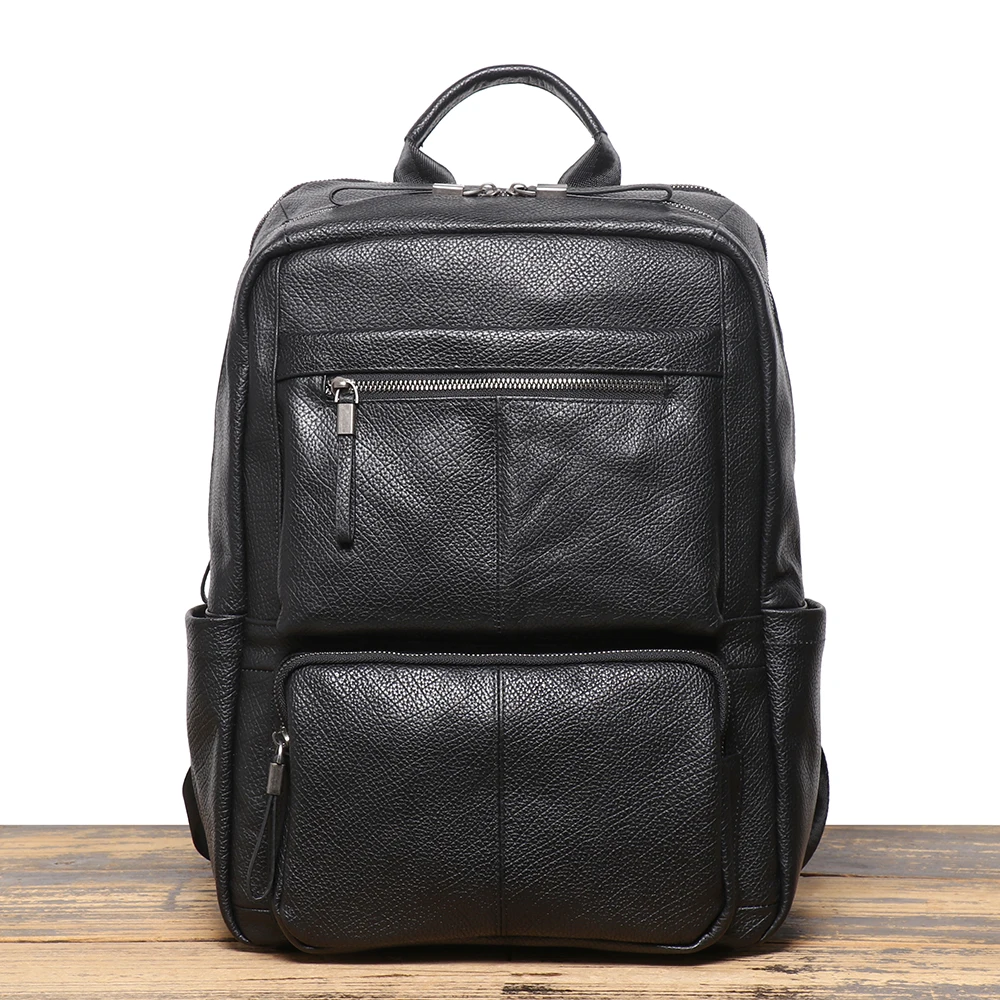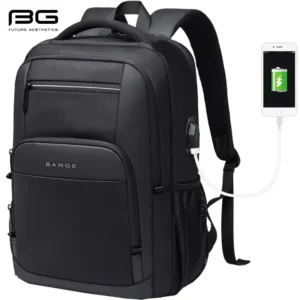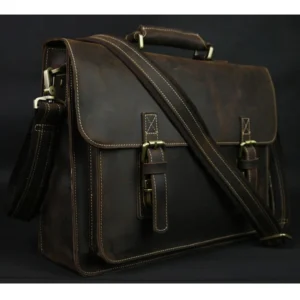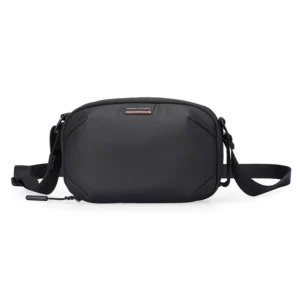In the fast-paced professional world, your commuter bag does more than just carry your essentials—it makes a statement about your attention to quality and detail. Investing in a long-lasting leather commuter bag represents a choice to prioritize durability, functionality, and professional appearance over the temporary satisfaction of cheaper alternatives.
Quality leather bags stand the test of time both physically and stylistically. While synthetic bags might need replacement every 1-2 years, a well-crafted leather bag can serve you faithfully for 10+ years or more, developing a rich patina that tells the story of your professional journey. The right leather commuter bag transforms your daily routine, offering reliability, organization, and a touch of sophistication that elevates your professional image.
This comprehensive guide will explore everything you need to know about selecting, using, and maintaining a leather commuter bag that will last for years—perhaps even decades—to come. From understanding leather grades to evaluating construction techniques, we’ll provide the knowledge you need to make a confident investment in your daily carry solution.
When considering daily professional use, durable leather backpacks for commuters offer unmatched longevity when compared to other materials, making them an excellent long-term investment.
What Makes a Leather Commuter Bag Truly Long-Lasting?
Before diving into specific product recommendations, it’s essential to understand what separates a truly durable leather bag from one that merely looks good on the shelf. Four key factors determine how well a leather bag will withstand the rigors of daily use: leather quality, construction techniques, hardware durability, and interior materials.
These elements work together as a system—weakness in any single area can compromise the bag’s overall durability. Understanding these aspects helps you look beyond marketing claims to evaluate a bag’s true longevity potential.
The characteristics that make durable leather backpacks stand apart from average options often lie in details that many shoppers overlook.
Understanding Leather Grades for Maximum Durability
Not all leather is created equal. The grade and quality of leather used in your commuter bag is perhaps the single most important factor in determining its lifespan.
Full-grain leather represents the highest quality available. It comes from the top layer of the hide and includes all of the natural grain, making it exceptionally strong and resistant to wear. Full-grain leather develops a beautiful patina over time, actually looking better as it ages. It requires minimal processing, which preserves its natural strength and water resistance.
Top-grain leather is the second-highest quality, created by sanding away imperfections from the top layer and adding a finish. While more uniform in appearance than full-grain, it’s still quite durable but won’t develop the same rich patina over time.
Genuine leather is a misleading term that actually refers to the third quality tier. It’s made from the layers remaining after top-grain is removed, bonded together and treated with dyes. Despite the name, it offers significantly less durability and tends to deteriorate within a few years of regular use.
Bonded leather is essentially the “particle board” of leather—made from shredded leather scraps bonded together with adhesives. It’s substantially weaker than other types and should be avoided if longevity is your goal.
| Leather Grade | Durability Rating | Key Characteristics | Maintenance Requirements | Price Range |
|---|---|---|---|---|
| Full-grain | 10-20+ years | Natural markings, develops patina, highest strength | Regular conditioning (2-4x yearly) | $$$-$$$$ |
| Top-grain | 5-10+ years | Smooth, uniform appearance, good strength | Regular conditioning (3-4x yearly) | $$-$$$ |
| Genuine | 2-5 years | Often shiny finish, less breathable | Frequent conditioning to prevent cracking | $-$$ |
| Bonded | 1-2 years | Artificial appearance, prone to peeling | Minimal options for repair or maintenance | $ |
The exceptional durability of full-grain leather backpacks comes from the intact fiber structure of the hide’s top layer, which provides natural resistance to moisture and abrasion.
For professionals seeking maximum longevity, our full-grain leather backpack collection offers options specifically designed for years of daily use.
Superior Construction Techniques That Ensure Longevity
Even the finest leather will fail prematurely if poorly constructed. Quality construction techniques are what transform excellent materials into a truly long-lasting product.
Premium stitching methods make a significant difference in durability:
– Saddle stitching (done by hand) creates redundancy—if one stitch breaks, the entire seam doesn’t fail
– Density matters—quality bags feature 5-7 stitches per inch for optimal strength
– Thread material should be nylon or polyester rather than cotton for resistance to moisture and abrasion
Stress point reinforcement is critical for areas that bear the most weight:
– Double or box stitching at handle attachments
– Reinforced rivets at corners and strap connection points
– Bar tacks at ends of zippers and high-stress seams
Edge finishing techniques protect vulnerable leather edges:
– Burnished edges (polished until smooth and sealed)
– Painted edges with protective sealant
– Folded and stitched edges for maximum durability
Pattern cutting and alignment ensures stress is distributed evenly across the bag rather than concentrated in vulnerable areas.
The classic leather backpack construction techniques used in premium bags often incorporate traditional methods that have proven their worth through generations of use.
Hardware Quality: The Often Overlooked Durability Factor
While leather typically gets all the attention, hardware failures are often the first point of failure in otherwise quality bags. Zippers that catch, buckles that break, and clasps that fail can render an otherwise excellent bag unusable.
Quality zipper brands make a tremendous difference:
– YKK and RiRi are industry standards for longevity
– Metal zippers outperform plastic for heavy-use applications
– Self-healing zipper designs allow teeth to reconnect if separation occurs
Buckles and clasps should be evaluated for:
– Solid brass or stainless steel construction rather than plated alternatives
– Smooth operation without catching or requiring excessive force
– Rounded edges that won’t cut into leather over time
D-rings and attachment points require:
– Solid cast construction rather than bent metal
– Secure anchoring with reinforced stitching and backing
– Proper sizing for intended use—too small and they create pressure points
Quality hardware is noticeably heavier than cheap alternatives—this weight difference is actually a good indicator of durability. Marine-grade hardware offers excellent corrosion resistance for daily exposure to moisture and environmental factors.
Interior Materials and Lining That Stand the Test of Time
While exterior appearance may sell bags, the interior construction significantly impacts longevity. A well-constructed interior prevents stretching, maintains the bag’s shape, and protects your belongings.
Durable lining materials include:
– Heavy canvas (12-18 oz) for maximum durability
– Ripstop nylon (at least 200 denier) for lightweight strength
– Microsuede for protection of delicate items like electronics
– Cotton twill with tight weave for resistance to tearing
Quality interiors feature reinforced pocket edges, bound seams to prevent fraying, and strategic reinforcement at stress points. Water-resistant treatments on interior fabrics provide an additional layer of protection for your belongings without adding significant weight.
Even the most beautiful leather bag will fail prematurely if its interior construction doesn’t match the quality of its exterior.
Essential Features for Daily Professional Commuting
Durability alone isn’t enough to make a leather commuter bag truly valuable. The best bags combine longevity with thoughtful features that enhance your daily experience, turning your bag from a simple carrier into an essential professional tool.
The right combination of organization, comfort, weather protection, and security transforms how you interact with your bag daily. Too few features make a bag inconvenient; too many add unnecessary weight and complexity.
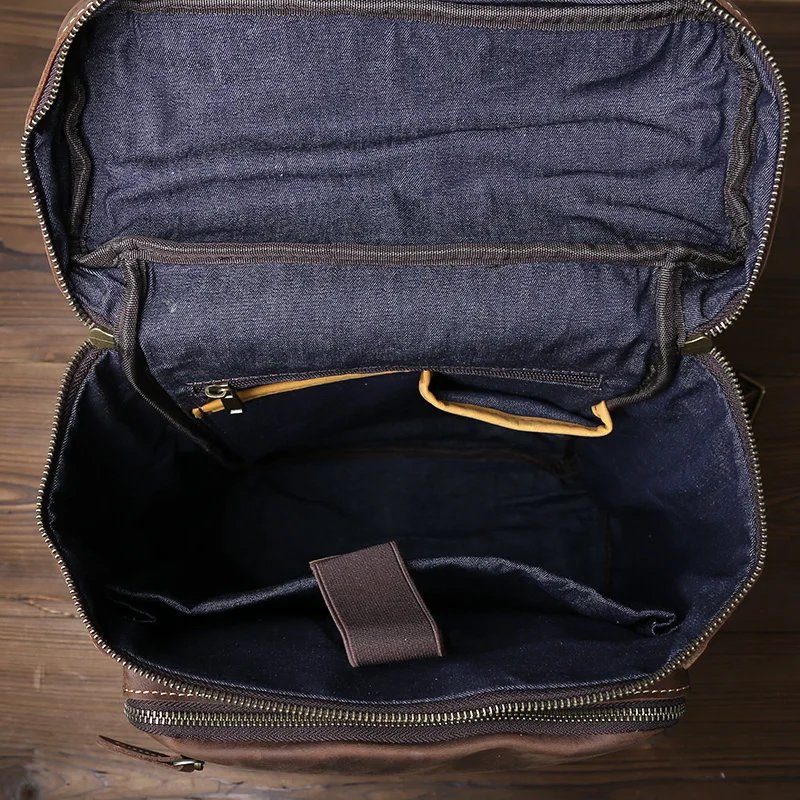
Finding the right balance is key, and leather backpacks for daily use need to address both practical functionality and professional aesthetics.
Optimal Organization: Storage Solutions for Modern Professionals
Modern professionals carry an increasingly complex collection of tools, from laptops and tablets to power banks, styluses, and traditional items like documents and writing instruments. Thoughtful organization makes accessing these items efficient and prevents damage.
Essential compartments include:
– Padded laptop compartments sized appropriately for modern devices (typically accommodating up to 16” laptops)
– Document sleeves that prevent folding or creasing important papers
– Dedicated tablet pockets with soft lining to prevent screen scratches
– Small item organization for pens, business cards, and accessories
– Cable management solutions to prevent tangling
– Quick-access pockets for frequently used items like phones or transit cards
The best organizational systems provide sufficient separation without excessive weight or bulk. Some innovative features worth considering include RFID-blocking pockets for credit cards and passports, hidden security compartments, and modular organizers that can be reconfigured as needs change.
Our leather laptop backpack collection features designs specifically developed to organize and protect modern professional tools while maintaining a timeless aesthetic.
Comfort and Ergonomics for Daily Commuting
A bag that causes physical discomfort will likely be replaced regardless of its quality or durability. Comfort features are particularly important for daily commuting, where you may carry your bag for extended periods.
Strap design is crucial for comfortable carrying:
– Width of at least 1.5 inches distributes weight more evenly
– Padding of 0.25-0.5 inches provides cushioning without bulk
– Adjustability to position the bag properly on your body
– Contoured shapes that follow natural shoulder curves
Carrying style ergonomics vary significantly:
– Backpacks distribute weight most evenly across both shoulders
– Messenger bags allow quick access but place weight asymmetrically
– Briefcases keep weight close to your body’s center but require hand carrying
Additional comfort features like padded back panels, air channels for ventilation, and trolley sleeves for attaching to rolling luggage can significantly enhance daily usability.
Finding a bag that’s the right size for commuting means balancing capacity with comfort—oversized bags encourage overloading, while undersized options force uncomfortable compromises.
Weather Protection Features Worth Considering
Quality leather offers natural water resistance, but additional features can enhance protection for both the bag and its contents during unexpected weather changes.
Effective weather protection includes:
– Flap-over designs that direct water away from zippers
– Water-resistant zipper designs with protective covers
– Strategic seam placement to minimize water entry points
– Interior waterproof linings or compartments for electronics
Leather treatments can enhance natural weather resistance without compromising breathability. The best options penetrate the leather rather than creating a surface coating that can crack or wear away.
It’s important to note that even the most weather-resistant leather bag benefits from occasional drying time—constant exposure to moisture without recovery time will eventually compromise any natural material.
Security Elements for Urban Commuters
Daily commuting in busy urban environments presents unique security challenges. Thoughtful security features protect your belongings without making access cumbersome for you.
Effective security features include:
– Main compartment closures that can’t be easily accessed by others
– Hidden pockets positioned against your body for valuable items
– RFID blocking materials for protection against electronic theft
– Locking mechanisms that balance security with convenience
The best security features work invisibly—they protect your belongings without drawing attention to themselves or significantly impacting your ability to access contents quickly.
Top-Rated Long-Lasting Leather Commuter Bags
After understanding what makes a leather bag truly durable, let’s examine some specific options that exemplify these qualities. Our selection methodology prioritizes materials, construction quality, functionality, and user feedback, with particular attention to how these bags perform after extended daily use.
The recommendations span various price points, from investment pieces to more accessible options, but all meet our criteria for materials and construction that support long-term use.
For those interested in the latest designs, our guide to best commuter backpacks offers additional options with cutting-edge features.
Premium Leather Messenger Bags Built to Last
Messenger bags remain a popular choice for professionals who appreciate quick access and a classic aesthetic. The best leather messenger bags combine traditional styling with modern organization and comfort features.
Top options feature full-grain leather with a thickness of 1.8-2.2mm—substantial enough for durability without excessive weight. Hardware typically includes solid brass or stainless steel components, particularly at stress points like strap attachments and closure systems.
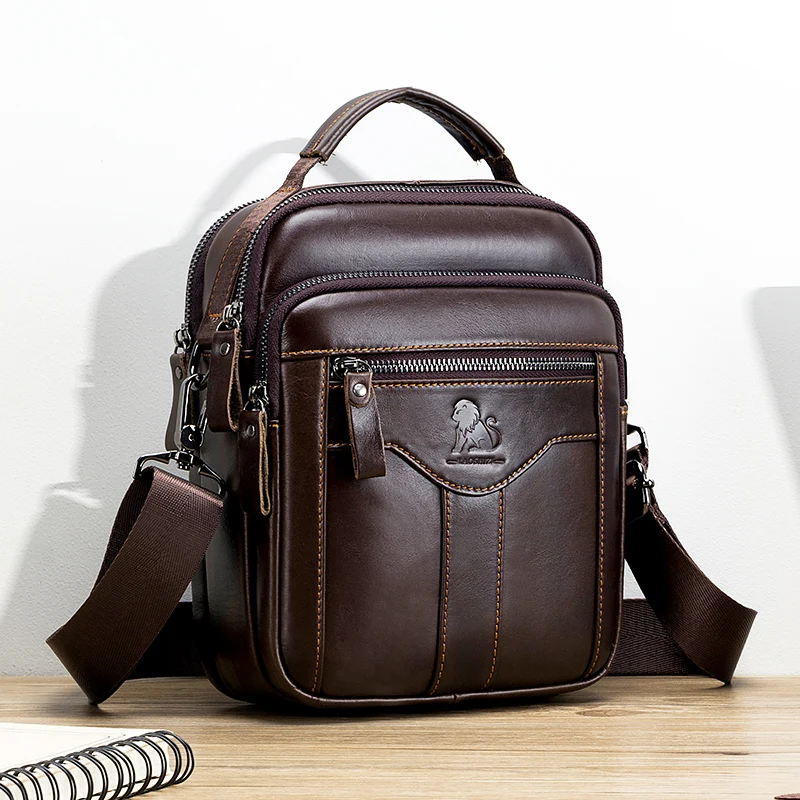
Key features that distinguish exceptional messenger bags include:
– Padded, adjustable shoulder straps (at least 2 inches wide)
– Stabilizing cross-body straps to prevent shifting during active commuting
– Water-resistant compartments for electronics
– Strategic interior organization that balances capacity with accessibility
– Exterior quick-access pockets that remain secure while moving
Most premium messengers accommodate laptops up to 15 inches, along with documents, small electronics, and daily essentials. The best designs balance capacity with a profile that isn’t overly bulky.
For active commuters, our crossbody leather sling backpack options provide a more secure carrying experience while maintaining quick access.
Durable Leather Briefcases for Professional Environments
For formal professional environments, a well-crafted leather briefcase remains the gold standard of executive accessories. Modern briefcases balance traditional aesthetics with contemporary functionality.
Quality briefcases feature reinforced handles with comfortable grips, often with interior steel supports to maintain shape even when heavily loaded. The best examples include both hand carrying and shoulder strap options to adapt to different situations.
Interior organization typically focuses on document management, with padded laptop compartments integrated in a way that maintains the bag’s traditional lines. Premium briefcases often feature expandable designs that adapt to varying load requirements while maintaining a consistent professional appearance.
Professional briefcases should strike a balance between classic design and modern utility. For professionals who appreciate versatility, convertible leather briefcase backpacks offer traditional aesthetics with modern carrying options.
Long-Lasting Leather Backpacks for Comfortable Commuting
Leather backpacks have gained significant popularity among professionals seeking comfort without sacrificing style. The best options feature ergonomic designs that distribute weight evenly while maintaining a professional aesthetic.
Quality backpacks include padded, contoured shoulder straps (typically 2-2.5 inches wide), strategically placed back padding, and often a sternum strap for additional stability. Leather thickness typically ranges from 1.6-2.0mm, balancing durability with weight considerations.
Organization systems in professional backpacks typically feature vertical access for laptops up to 16 inches, document compartments that prevent creasing, and intuitive small-item organization. The best designs keep frequently accessed items within reach without removing the bag from your shoulders.
14 Inch Leather Laptop Backpack, Brown Leather Backpack, Men's Leather Backpack, Vintage Leather Backpack
Price range: $177.28 through $199.12 Select options This product has multiple variants. The options may be chosen on the product pageDesigner Men's Backpack, Men's Leather Laptop Backpack, Men's Leather Work Backpack
Price range: $158.04 through $160.04 Select options This product has multiple variants. The options may be chosen on the product pageBrown Leather Sling Backpack, Crossbody Leather Sling Backpack, Men's Leather Sling Backpack
Price range: $191.96 through $193.72 Select options This product has multiple variants. The options may be chosen on the product page15 Inch Leather Laptop Backpack, Leather Briefcase Backpack
$332.96 Select options This product has multiple variants. The options may be chosen on the product pageBlack Leather Sling Backpack, Crossbody Leather Sling Backpack, Small Leather Sling Backpack
Price range: $103.88 through $104.08 Select options This product has multiple variants. The options may be chosen on the product page17 Inch Leather Laptop Backpack, Men's Leather Travel Backpack, Men's Leather Work Backpack
Price range: $106.28 through $143.88 Select options This product has multiple variants. The options may be chosen on the product page
For professionals seeking a balance of comfort and style, our men’s leather work backpack collection offers designs specifically developed for business environments.
Budget-Friendly Yet Durable Leather Commuter Options
While premium leather bags offer the longest potential lifespan, well-designed mid-range options can still provide excellent durability at more accessible price points. These bags typically use top-grain leather rather than full-grain, with strategic construction choices that maintain durability where it matters most.
Intelligent compromises include:
– Simplified interior organization that focuses on essential features
– Hardware that prioritizes function over decorative elements
– Strategic use of premium materials at high-wear points with more economical choices elsewhere
– Classic designs that remain relevant despite changing fashion trends
With proper care, these mid-range options can still provide 5-8 years of daily service—significantly outlasting synthetic alternatives at similar price points. The value proposition becomes clear when considering the cost per use over the bag’s lifetime.
How to Choose the Right Long-Lasting Leather Bag for Your Needs
With so many quality options available, selecting the right leather commuter bag requires thoughtful consideration of your specific needs and preferences. The perfect bag matches your professional requirements, commuting style, and personal aesthetic while providing the durability features discussed earlier.
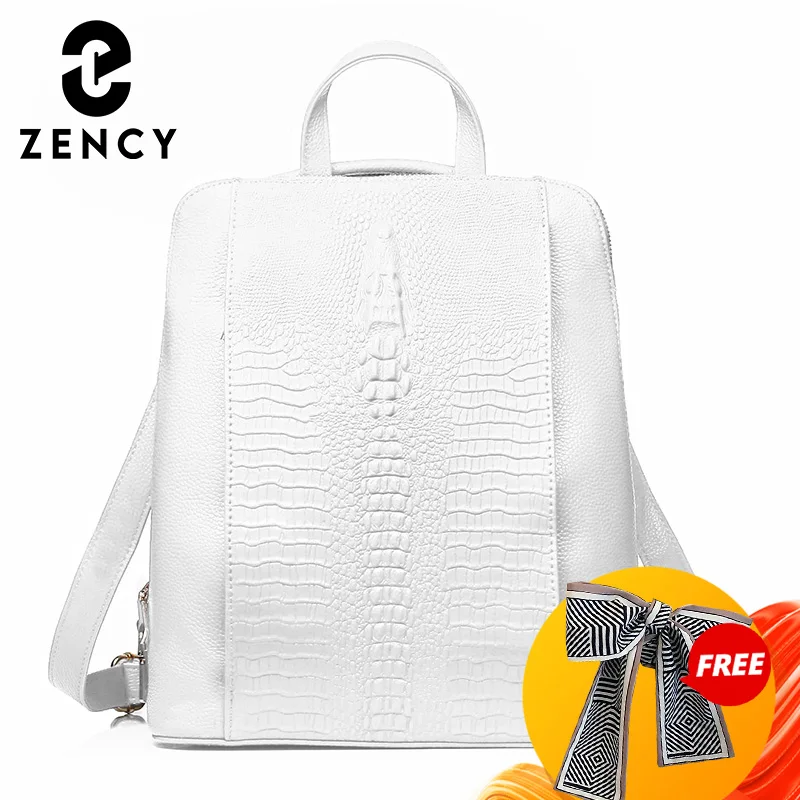
Understanding how to choose a rugged leather backpack involves assessing both practical requirements and personal preferences to find your ideal match.
Analyzing Your Daily Carry Requirements
Begin by conducting an honest inventory of what you actually carry daily versus occasionally. Common professional items include:
– Laptop/tablet (note specific dimensions)
– Chargers and cables
– Documents (quantity and sizes)
– Writing instruments
– Water bottle
– Personal items (wallet, keys, phone)
– Occasional items (umbrella, light jacket, lunch)
Measure your largest regular items and add approximately 20% capacity for flexibility. Consider not just volume but also specific dimensional requirements—a bag that technically has sufficient capacity but can’t accommodate your laptop’s dimensions isn’t a practical solution.
Consider your organizational style as well. Do you prefer dedicated compartments for everything, or do you work better with a few larger spaces? Your natural organizational habits should influence your bag selection.
Matching Your Bag to Your Commute Style
Different commuting methods create distinct requirements for your bag. Consider how you travel most frequently:
Public transit commuters benefit from:
– Hands-free carrying options (backpacks or cross-body styles)
– Secure closures that prevent access in crowded spaces
– Compact profiles that navigate crowded vehicles
– Quick-access pockets for transit cards or phones
Walking commuters should prioritize:
– Balanced weight distribution
– Padded straps and ergonomic design
– Weather-resistant features
– Reflective elements for visibility and safety
Cycling commuters need:
– Secure, stable carrying systems that don’t shift while riding
– Reflective elements for visibility
– Weather protection beyond basic water resistance
– Designs that allow full shoulder mobility
Car commuters might prefer:
– Hand-carry options that are easy to stow
– Structured designs that don’t collapse when set down
– Quick-access organization for essential items
For those who alternate between transportation methods, durable leather commuter backpacks provide versatility while withstanding the varied stresses of different commuting environments.
Understanding Carrying Style Preferences
Your preferred carrying style significantly impacts both comfort and functionality. Consider your personal preference:
Shoulder bags provide quick access and a classic professional look but place weight asymmetrically, which can cause discomfort during extended carrying.
Cross-body bags offer better weight distribution and security than shoulder bags while maintaining relatively easy access to contents.
Backpacks distribute weight most evenly and allow carrying heavier loads comfortably but require removal for access to most contents.
Hand-carry briefcases maintain a formal professional appearance but limit free use of your hands and can become uncomfortable with heavier loads.
Consider how long you typically carry your bag continuously and how frequently you need to access its contents. Your carrying preference might be different for a five-minute walk than for a 30-minute commute.
Balancing Investment and Value
Quality leather bags represent a significant investment, but evaluating them on a cost-per-use basis often reveals their true value. A $300 bag used 240 days per year for 5 years costs just 25 cents per use—substantially less than repeatedly replacing cheaper alternatives.
Consider these value factors:
– Initial quality threshold that ensures basic durability (typically starting at $200-250)
– Features that specifically match your needs versus premium features you won’t utilize
– Repair options and warranty coverage
– Classic design elements that won’t look dated quickly
The most significant quality jumps typically occur between synthetic and genuine leather, then again between genuine and top-grain/full-grain options. Beyond this point, increased cost often relates more to brand prestige or design details than to fundamental durability improvements.
Aligning With Your Professional Image
Your bag is an extension of your professional image. Consider how various styles align with your industry’s expectations and your personal brand.
Traditional corporate environments often favor structured briefcases or subtle backpacks in black, dark brown, or burgundy. Creative industries typically allow more flexibility in design and color. Startups and tech companies often embrace modern interpretations of classic styles.
When selecting color, consider:
– Versatility with your existing wardrobe
– Appropriate formality for your professional environment
– How the leather will age and patina over time
– Maintenance requirements (lighter colors typically show wear more visibly)
Our leather work backpack collection includes options designed to strike the perfect balance between professional appearance and practical functionality.
Essential Care Techniques for Maximizing Your Leather Bag’s Lifespan
Even the highest quality leather bag requires proper maintenance to reach its full longevity potential. A consistent care routine significantly extends your bag’s useful life while maintaining its appearance and functionality.
The difference between well-maintained and neglected leather becomes increasingly apparent over time. After just a few years, a properly cared for leather bag develops a rich patina while maintaining its structural integrity, while a neglected bag may show cracking, fading, or structural failure.
Our guide to leather commuter backpack care tips provides detailed information for maintaining your investment.
Routine Cleaning and Protection Methods
Regular maintenance prevents dirt and oils from damaging leather over time. Establish a simple routine:
Dust removal: Wipe your bag with a dry, soft cloth weekly to remove surface dust and prevent it from settling into the leather.
Spot cleaning: Address spills immediately with a slightly damp cloth, then allow to air dry naturally away from direct heat sources.
Deep cleaning: Every 1-3 months (depending on use), clean with a leather-specific cleaner:
– Apply sparingly with a soft cloth using circular motions
– Allow to dry naturally between applications
– Avoid household soaps, which can strip natural oilsPreventative care: Keep leather away from sustained direct sunlight, extreme temperatures, and high humidity.
For specific stains, always test cleaning products on an inconspicuous area first. Avoid alcohol-based products, which can dry and damage leather over time.
Conditioning for Long-Term Leather Health
Conditioning replaces natural oils that evaporate from leather over time, preventing drying and cracking while maintaining flexibility. Signs that your bag needs conditioning include:
– Leather feels dry or stiff to the touch
– Slight lightening in color
– Loss of natural luster
– Development of fine lines when the leather is flexed
When conditioning:
1. Apply a leather-specific conditioner sparingly with a soft cloth
2. Use gentle circular motions to work the conditioner into the leather
3. Allow to absorb for the time specified by the product (typically 15-30 minutes)
4. Buff away any excess with a clean cloth
5. Allow 24 hours for complete absorption before heavy use
Conditioning frequency depends on use conditions, but typically ranges from 2-4 times annually. Over-conditioning can saturate leather and attract dirt, so more isn’t necessarily better.
The quality of leather used in leather quality bags affects how it responds to conditioning—full-grain leather typically requires less frequent conditioning than processed leathers.
Weather Protection and Storage Best Practices
Environmental factors significantly impact leather longevity. Protect your bag from the elements:
- Apply a leather-specific water and stain repellent every 3-6 months
- Allow complete drying after exposure to moisture
- Avoid prolonged exposure to direct sunlight, which can fade and dry leather
- In extreme weather, consider a protective bag cover
When storing your bag:
– Clean and condition before extended storage
– Stuff with acid-free tissue paper to maintain shape
– Store in a breathable fabric dust bag, never plastic
– Position on a shelf rather than hanging, which can distort shape
– Maintain moderate humidity and temperature (excessive dryness causes cracking)
For seasonal storage, check your bag monthly and allow it to air out to prevent mildew development.
Addressing Common Issues: Scratches, Stains and Repairs
Minor damage doesn’t necessarily mean your bag is compromised. Many issues can be addressed with simple techniques:
For minor scratches:
1. Clean the area thoroughly
2. Apply a small amount of conditioner with your fingertip
3. Gently buff with a soft cloth
4. For deeper scratches, a leather cream in a matching color can help
For water spots:
1. Allow to dry completely naturally (never use heat)
2. Apply conditioner evenly across the entire panel, not just the spot
3. If a ring persists, consult a leather professional
For hardware issues:
– Tighten loose screws immediately to prevent enlargement of holes
– Apply a small drop of clear nail polish to secure screw threads
– Lubricate sticky zippers with a wax-based product designed for the purpose
Know when to seek professional repair—structural issues, significant color loss, or hardware failure beyond simple tightening typically require expert attention. For quality bags, professional repair is often more economical than replacement.
Frequently Asked Questions About Long-Lasting Leather Commuter Bags
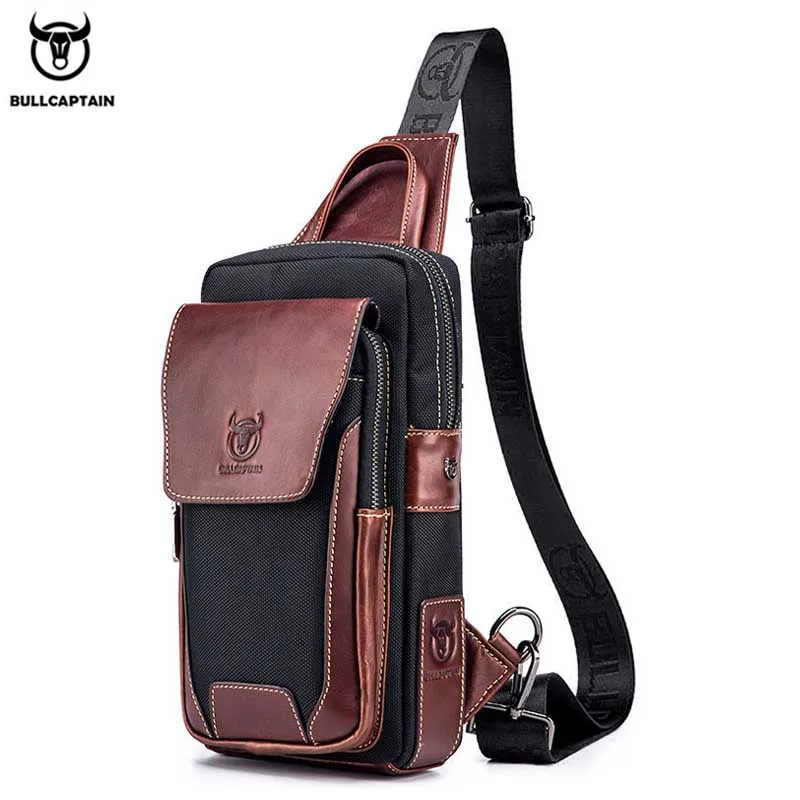
What is the most durable type of leather for daily use?
Full-grain leather offers the greatest durability for daily use. Because it includes the entire top grain of the hide with its dense fiber structure intact, it resists moisture, abrasion, and flexing better than processed leathers. Though initially stiffer, full-grain leather becomes more supple with use while maintaining its strength.
How can I verify the quality of leather when purchasing online?
Look for detailed descriptions mentioning specific leather types (full-grain or top-grain), tannery information, and thickness specifications. Reputable manufacturers willingly provide this information. Request additional photos showing natural grain patterns, edge details, and interior construction. Finally, check return policies to ensure you can evaluate the leather in person without risk.
Are vegetable-tanned leathers more durable than chrome-tanned?
Vegetable-tanned leather typically offers greater longevity than chrome-tanned, though with different characteristics. Vegetable tanning creates a firmer leather that develops a rich patina and molds to use patterns over time. Chrome tanning produces softer, more immediately pliable leather that’s more water-resistant initially but may not age as gracefully. For bags, vegetable-tanned leather often provides better structural longevity.
How often should I condition my leather commuter bag?
Conditioning frequency depends on use conditions and climate. As a general guideline, condition 2-4 times annually, with more frequent care in dry climates or during winter heating seasons. Rather than following a strict schedule, learn to recognize when your specific bag needs conditioning—when the leather begins to look dry or feels less supple to the touch.
Can I use a leather bag safely in rainy conditions?
Quality leather bags can handle occasional light rain, especially if properly treated with appropriate protectants. Full-grain leather has natural water-resistant properties. However, sustained exposure to heavy rain can eventually saturate leather. If caught in heavy rain, gently blot (don’t rub) excess moisture, stuff with paper to maintain shape, and allow to dry naturally away from heat sources. Apply conditioner after complete drying.
How do I prevent the handles from cracking over time?
Handles experience the most contact with skin oils and moisture, making them vulnerable to cracking. Clean handles more frequently than the rest of the bag, using a leather cleaner that removes oils without over-drying. Apply conditioner regularly, particularly to the underside of handles where bending occurs. Consider using separate handle covers during periods of heaviest use, especially in summer months when hand perspiration increases.
What’s the best way to clean the interior of a leather bag?
For fabric linings, vacuum with a small attachment to remove dust and debris. Spot clean stains with a mild soap solution applied with a barely damp cloth, being careful not to saturate the fabric. Allow to air dry completely. For stubborn odors, place an open container of baking soda inside overnight. Avoid liquid cleaners that might seep into seams and affect the leather exterior.
Is it worth repairing an aging leather bag or better to replace it?
Quality leather bags are generally worth repairing unless structural damage is severe. While repairs may cost $50-150 depending on complexity, this is typically far less than replacement. Good candidates for repair include hardware replacement, reinforcement of weakened stress points, and restitching of seams. The natural patina that develops on full-grain leather over time adds character that cannot be replicated in a new bag, often making repair the better aesthetic choice as well.

